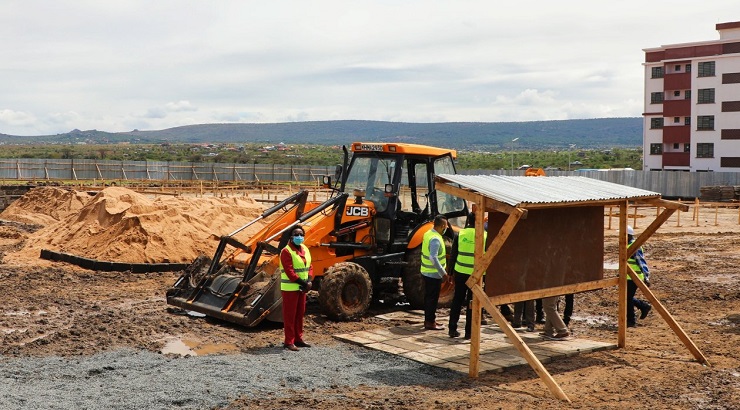Residential Projects
Work Begins on Sh20bn Stoni Athi Waterfront City Project
The project seeks to deliver 10,500 housing units.

Work has finally begun on Stoni Athi Waterfront City, a Sh20 billion project that seeks to deliver 10,500 housing units in Athi River, Machakos County.
Developed by the National Housing Corporation (NHC), the 150-acre Stoni Athi Waterfront City project will deliver 10,500 units targeting low, middle and high-income earners.
Some 5,000 units will be built under the State-backed affordable housing programme and will be sold at between Sh1 million and Sh3 million per unit.
Another 5,500 units targeting middle and high-income earners will be sold for between Sh2 million and Sh8 million per unit.
Stoni Athi Waterfront City will include a shopping mall and social amenities such as hospitals, schools, playing grounds, parks, and a boat riding facility for residents.
Speaking during the launch of the project on Dec. 3, Transport, Infrastructure and Housing Secretary James Macharia termed Stoni Athi Waterfront City a great step towards achieving the NHC Kenya mandate of housing the nation.
RELATED: Property Manager Acquires 200 Homes at Garden City
Mr Macharia said the State firm is capable of using joint ventures and other collaborative enhancements to address the shortage of housing in the country.
“The NHC can provide vehicles through which county governments can facilitate the development of affordable homes,” he said.
Building technology
According to NHC board chairman Stephen Ngare, expanded polystyrene (EPS), an alternative building technology, will be deployed on Stoni Athi Waterfront City to cut building costs, hence lowering prices for the buyers.
“The cost savings drawn from the use of the EPS are passed on to the eventual house owner. The corporation can effectively supply the EPS from its manufacturing plant located here in Mavoko,” Mr Ngare said.
EPS panels are made of light cellular plastic, a by-product of oil refining, which comprises tiny circular particles containing nearly 100% air.
To make the panels, polystyrene foam is inserted between two slabs of steel wire mesh after which the fused slabs are spewed with cement to support and reinforce the walls.
The air bubbles trapped in the foam mean EPS houses offer better control of climatic conditions compared to houses made of concrete or wood.
Since air is a poor conductor of heat, the building remains cool when it is hot outside and warm when external temperatures are low.
The use of EPS panels in erecting walls, staircases, floors and roofs helps to cut down the construction period by half while slashing building costs by 30 per cent.














